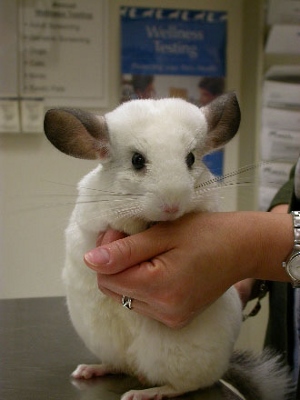
The ultra-soft chinchilla was our featured creature for our June edition of Animal of the Month. We hope you enjoyed our tweets about the charming chinchilla on our Twitter feed @ExoticPetVets. But in case you missed them, here is a summary of the chinchilla facts we highlighted throughout the month. Did you know?:
- Two species of chinchillas exist today. The short-tailed (Chinchilla chinchilla) and the long-tailed (Chinchilla lanigera).
- Chinchillas in captivity are from the long-tailed (C. lanigera) species.
- Chinchillas originate from the Andes mountains in South America and are closely related to the guinea pig.
- Chinchillas are nocturnal but also crepuscular animals, meaning they’re very active at dawn and dusk.
- Chinchillas are agile and active and large multi-level cages are good for pet chinchillas.
- The cage for a pet chinchilla should measure a minimum of 4′ x 4′ x 3′.
- Wire-mesh cages are preferred for chinchillas in captivity as they love to chew.
- Never house a chinchilla in a cage with galvanized wire, which can be toxic because it contains zinc.
- A unique habit of chinchillas is that they need to have dust baths to maintain healthy fur and skin.
- Chinchillas should have access to a dust box for 10-15 minutes a day. The box is removed after use.
- Chinchilla’s dust box should be at least 6″ x 6″ x 9″ and have 2″-3″ of dust in the bottom.
- A large sturdy fishbowl that can’t tip over can also be used as a place where chinchillas can take their dust baths.
- Dust for chinchillas can be found in pet stores and it must be changed every 2-3 weeks for hygienic reasons.
- Did you know that chinchillas can’t sweat so they are vulnerable to heat stroke?
- The optimal environmental temperature for chinchillas should be 50º-68ºF (10º – 20ºC) and definitely below 80º F (27º C).
- Chinchillas also can’t tolerate humidity so high humidity in their environment should be avoided.
- Chinchillas are shy, quiet animals and are a pet better suited for adults and older children.
- Chinchillas are popular as pets in part because of their soft fur, which also makes them popular within the fur industry.
- The fur industry mostly uses chinchillas that are farm-raised to make clothing and other products.

